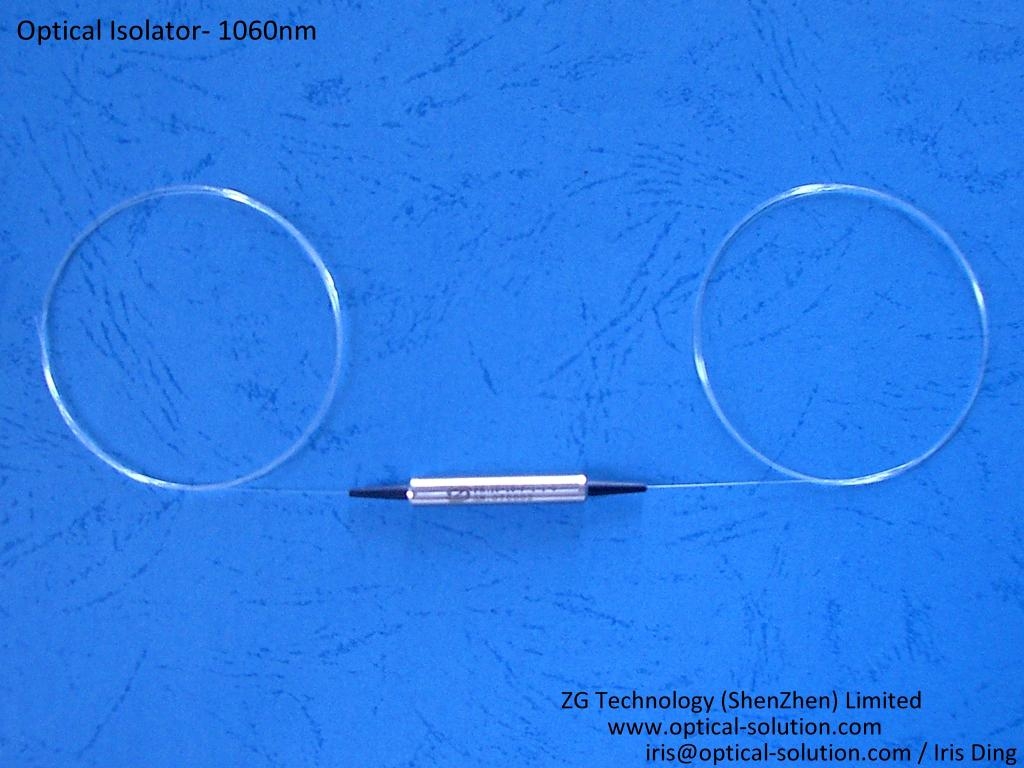

If 660 nm light is sent backward through an isolator designed for 670 nm without any tweaking, it will have a net polarization of 45° + 46.5° = 91.5° relative to the axis of the input polarizer. For example, if 670 nm light is rotated by 45° (that is, 670 nm is the design wavelength), then 660 nm light is rotated by 46.5°. This means that light with a different wavelength than the design wavelength will not be rotated at exactly 45°. The magnitude of the rotation caused by the Faraday rotator is wavelength dependent. See the Isolator Tutorial tab for a schematic of the beam path. Therefore, an isolator rejects backward propagating light. Light propagating through the isolator in the backward direction is polarized at 45° by the output polarizer and is rotated by 45° by the Faraday rotator, giving a net polarization of 90° relative to the transmission axis of the input polarizer. They contain a Faraday rotator that has been factory tuned to rotate light of the design wavelength by 45°. Thorlabs' Adjustable Narrowband Isolators are designed to provide the same peak isolation anywhere within a 20 - 40 nm tuning range. Operating Principles of Optical Isolators Light at the Design Wavelength is Rejected We offer a selection of faraday rotators from stock and can provide custom faraday rotators upon request. Our vertically integrated manufacturing structure allows us to offer faraday rotators used in optical isolators.

Thorlabs' in-house manufacturing service has over 25 years of experience and can deliver a free-space isolator tuned to your center wavelength from 244 nm to 4.55 µm. If Thorlabs does not stock an isolator suited for your application, please refer to the Custom Isolators tab for information on our build-to-order options, or contact Tech Support.

Thorlabs also manufactures isolators for fiber optic systems and wavelengths extending into the infrared (see the Selection Guide table to the left). In addition, all isolators have engravings that indicate the alignment of the input and output polarizers. Please see the Isolator Types tab for additional design details and representative graphs of the wavelength-dependent isolation.Įach isolator's housing is marked with an arrow that indicates the direction of forward propagation. These offer the user the ability to adjust the alignment of the input and output polarizers, allowing tuning of the center wavelength within a 10 nm range and an operation range of 20 nm. In the UV wavelength range, we offer adjustable narrowband isolators. Please see the Isolator Tutorial tab for an explanation of the operating principles of a Faraday isolator. In addition, intense back-reflected light can permanently damage optics. Back reflections can create a number of instabilities in light sources, including intensity noise, frequency shifts, mode hopping, and loss of mode lock. Optical isolators, also known as Faraday isolators, are magneto-optic devices that preferentially transmit light along a single direction, shielding upstream optics from back reflections. Thorlabs is pleased to stock these free-space optical isolators, which have been designed for use in the UV spectral range (365 - 385 nm). Ø2.7 mm or Ø4.7 mm Max Beam Diameter (Model Dependent).Isolation at Center Wavelength of 30 dB.Please Contact Tech Support or See Our Custom Isolators Page.Customizable Wavelength, Aperture, Max Power, Housing, Polarizers, and Operating Temperature.


 0 kommentar(er)
0 kommentar(er)
